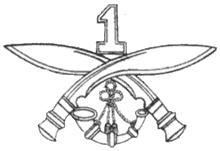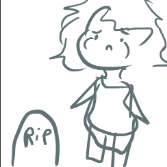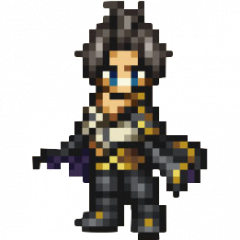All Activity
- Past hour
-
"Beg the crop to grow, you scoundrel runts! Festering upon your pretender Lord... What a joke are these blind beggers trying to pull here?" "And defiantly NO" Said Azlihessan cackling at the missive
- 10 replies
-
- cute puppies
- sun
-
(and 2 more)
Tagged with:
-
Santana allowed a sly grin to grace her features. "Look, Eli, they're having their party," she'd murmur towards her companion @Lirinya, offering the missive out for him to see. "What kind of gifts should we get them?
-
“o’I do wonder w’at their military structure looks loike nowadays…” Muttered the old Valeseer, reading up on the ongoings of his once-peoples.
-
The man drank his tea and stapled it to his board - remembering that for later.
-
The Viscountess-consort of Azor jumps for glee upon seeing the invitation that made its way to Rikardsburg. "Mea nieces - young laidies of the north already." Theodosya would have cried tears of joy had she not promised herself she'd never cry again!
-
A COMING OF AGE CELEBRATION FOR THE AMADOR TWINS From Ashes, We Rise EST 143 E.S. - Present | 1590 A.H. - Present ⋅ ───⊱༺⠀☨⠀༻⊰─── ⋅ ISSUED BY THE ON THIS 11TH DAY OF VZMEY AG HYFF OF 528 E.S. 11TH OF THE FIRST SEED, 179 S.A. ⋅ ───────────────⊱༺⠀☨⠀༻⊰─────────────── ⋅ EIGHTEEN YEARS AGO, THE House of Amador was blessed with two heirs: Esfir Artemisia and her twin sister, Selyne Sosina. With GODAN’S guidance, they have both grown to be remarkable young women, and as they enter adulthood, the Viscounty of Zvezlund wishes to invite all to celebrate the coming of age of the twins. PER HAESENI TRADITIONS REGARDING a Hauchmetvas, it is asked that no one wear the color red besides the debutantes. Additionally, any suitors wishing to court either of the debutantes are expected to make himself known to the girls’ parents: Viscount Henrik Amador, & Princess Royal Emma Anastasya, to ask for their blessing. If they grant it, he may then present the lady of his choosing with a gift containing sapphires, a gem that bears the hue of House Amador’s colors. “It is the pride and pleasure of the House of Amador to announce the births of Her Highness and the Viscount’s children. After a long and arduous prelude, two daughters entered the world at twilight beneath the sign of the Wanderer” – HENRIK III AMADOR & EMMA ANASTASYA ⋅ ───────────────⊱༺⠀I⠀༻⊰─────────────── ⋅ PER AMADOR TRADITION, BOTH girls bear a name of an ancestor. For Esfir, she is named Artemisia in honor of the Princess of Santegia and Countess-Consort of Gravelhold, Artemis. Selyne bears the name Sosina, both for the Baroness Sosina Ottina of Mondstadt, as well as the Viscount’s late sister, Baroness-Consort Poppiya Sosina of Verskaya. As they come of age, the debutantes have both learned the stories of the legacies behind their names, and will present their guests with a retelling of such. FOLLOWING THE SPEECH, THE debutantes’ parents, the Viscount and Princess Royal, will deliver their own words to Esfir and Selyne before the guests. ⋅ ───────────────⊱༺⠀II⠀༻⊰─────────────── ⋅ AT THE REQUEST OF Selyne Sosina, guests are invited to compete in a friendly baking competition. Baking has long been a hobby of the debutante, and she wishes to share her love for it with such a contest. Entries will be judged based on appearance and taste by Esfir and Selyne, and the winner of the competition will receive a prize of 50 mina. ⋅ ───────────────⊱༺⠀III⠀༻⊰─────────────── ⋅ FINALLY, TO END THE night, it is the wish of Esfir Artemisia to invite all guests to share the dancefloor of the ballroom and enjoy each other’s company with a grand night of revelry. The first dances will be shared between each debutante and her father, but following such, music will play for those who wish to dance. However, any potential suitors who wish to dance with the debutantes must first ask permission from the Viscount. ⋅ ───────────────⊱༺⠀IV⠀༻⊰─────────────── ⋅ His Royal Majesty, IVAN VIII, King of Hanseti-Ruska, and his Royal Pedigree His Grace, GAREN BARUCH, Duke of Valwyck, and his noble pedigree Her Grace, TATIYANA VAS RUTHERN, Duchess of Vidaus, and her noble pedigree The Most Honorable, HENRIK-OTTO LUDOVAR, Margrave of Kvasz, and his noble pedigree The Right Honorable, MIKHAIL COLBORN, Count of Malkovya, and his noble pedigree The Honorable, OFELIYA WEISS, Viscountess of Novkursain, and her noble pedigree His Lordship, ERIK KORTREVICH, Baroness of Koravia, and his noble pedigree His Lordship, FYODOR KOVACHEV, Baron of Kovgrad, and his noble pedigree Her Ladyship, GALINA GODUNOV, Baroness of Verskaya, and her noble pedigree Her Ladyship, ROSALIND VALKONEN, Baroness of Svargrad, and her noble pedigree All citizens of HANSETI-RUSKA and ALLIED CANONIST NATIONS His Serene Highness, MARIUS NIKOLAS, Grand Prince of Kusoraev His Royal Highness, JOSEF STANIMAR, Duke of Galahar Her Royal Highness, ANASTASYA MILENA, Duchess of Rothswald His Grace, SER STERLING BLAXTON-WHITEWOOD, Duke of Brabant, and his noble pedigree The Honorable, FRIEDRICH VON AUGUSTEN, Viscount of Azor, and his noble pedigree The HOUSE OF FALKER Her Royal Highness, ROWENA IVANNA, Princess of the Petra Her Royal Highness, OPHELIA JOHANNA, Princess of Balian His Royal Highness, ELIANOS HADRIAN, Prince of Balian Her Royal Highness, SANTANA LEYA, Grand Princess of Hyspia Her Highness, RENATA ALBA, Infanta of Hyspia His Highness, RAFAEL ARSENICO, Infante of Hyspia Lord ERWIN VON KANUNSBERG Lady VERENA VON KANUNSBERG Lady MILENA VAS RUTHERN Lady SVETLANA VAS RUTHERN Lady COSIMA TEMESCH Lord WILLIAM TEMESCH Lady CLAUDIA TEMESCH ADELINA VAN LEUVEN, and the House of van Leuven LIESBETH-MARIE KORT AMARI MOROZOV-TABBRIS MAITEAS VANDER ⋅ ───────────────⊱༺⠀☨⠀༻⊰─────────────── ⋅ His Excellency, HENRIK III EDVARD AMADOR, Viscount of Zvezlund, 11th Baron of Mondstadt, Lord Speaker of His Majesty’s Royal Duma, Head Archivist of the Valdev Royal Library Her Serene Highness, EMMA ANASTAYSA Princess Royal of Hanseti-Ruska, Duchess of Karlsburg and Karosgrad, Viscountess of Zvezlund, Baroness of Mondstadt, Court Custodian of Kastell Lesanova Her Ladyship, ESFIR ARTEMISIA AMADOR, Heiress to the Viscounty of Zvezlund and Barony of Mondstadt, Ward to the Grand Lady of Hanseti-Ruska Lady SELYNE SOSINA AMADOR
-
User was successfully implemented!I am a bot. Please contact a staff member if you need assistance.
-
Changed Status to Accepted
-
Hi there, as you can see, you have been accepted onto the server! Well done on your application, you’re doing great! Welcome to the wonderful community of LotC! To get started, The server IP is mc.lotc.co The server is 1.18.2 - 1.19.3 To get started, I suggest going to tutorial island or do; /creq Can a Wilven come assist me? Here are some links to help you start out! x3 https://wiki.lordofthecraft.net/index.php?title=Settlement_Guides https://wiki.lordofthecraft.net/index.php?title=Nations_and_Major_Charters If you need help, Feel free to contact me via the forums or my discord smol_bean . I’m often online, so you can message me with /msg Smol_bean0 to find me in game. If I’m not around You can always do /creq with your questions or you can also use the LotC Discord which is right here! : Discord Lastly, here is the new player hub, I recommend you look over it! New player hub Have fun role playing! :D
-
Changed Status to Pending
- Today
-
In a corner of the Basking Turtle tavern in Beznov, Adria, a half-conscious Ahren Jaeger fought what was perhaps his hardest battle in years: the struggle to finish the next of many essays. Dark bags formed beneath bloodshot eyes. Veins pulsed all over his brain. His heart thumped against his ribcage. His body swayed back and forth as the weary and ageing siege engineer struggled to stay upright, anchored to his table only by the marginal pressure his now-smoking quill still exerted on the paper. All he could do to stave off collapse was take a swig from his nth Euler Max bottle and pray he’d still be conscious by the end of the current paragraph. It was not the first he drank, nor would it be anywhere near the last. It was clear just from the clusters of empty Euler Max bottles littering his table that he spent no few consecutive all-nighters writing this essay. He wanted it done as soon as possible. But at the same time, he put off its completion for far too long. He lost count of how many energy drinks he poured down his gullet in the process of writing the essay. But it was a high-enough number to convince him that sleep deprivation and liver failure would probably kill him long before any Spook could run him through. But so long as his efforts ended up helping his fellow Descendants in some meaningful way, then it all would have been worth it. An indeterminate amount of Euler Maxes, whale steaks, and salted wyvern jerky later, Ahren would publish the following essay. He would later travel to Nevaehlen and personally distribute copies to the local Greenblades and any other allies involved in the Vale’s defence before finally passing out at the bottom of a sinkhole somewhere in the city. Ahren needed all the energy he could muster. For he had a lot more work to do but very little time to do it. On the defence of the Vale Part Two: Weaponizing terrain Preface My name is Ahren Jaeger, a siege engineer of Adria. In this turbulent era where Darkspawn run rampant across the world, my backstory is far from unique. Long-story-short: Darkspawn toppled the walls of my hometown and ate my mother. The scene still haunts me nearly three decades later. Today, Darkspawn continue to sow tragedy and chaos wherever their unholy ilk are permitted to fester, stamping down on Descendantkind’s freedom to thrive and prosper in peace. I pray every day that good Descendants will emerge victorious in the struggle against evil, but we can’t expect God to do all the work. It has thus become my mission to exterminate the Darkspawn scourge from this world, or at least help pave the way for those that will. As of the time of this essay’s publishing, a powerful Darkspawn entity known as the Harrower has enthralled the tribes of Ailmere and set out on a warpath against all of Descendantkind. One of the realms he’s currently targeting is the Vale of Nevaehlen. In response to a request for help, I deployed to the Vale as part of a small military advisory team led by Cathan, one of Aevos’s foremost experts on combating Darkspawn. Simply put, our goal is to help the Valefolk defend themselves against the Harrower. I haven’t known the people of Vale for long, but, in my book, they have proven to be good people. They do not deserve to become puppet-slaves like the Ailmerian tribes, who now exist only as walking blood sacrifices. I wish only for the Valefolk to live happily in peace. Cathan and I have been helping the Valefolk prepare against the Harrower for just over three years now, and I’m happy to report they are making good progress. I also noticed after publishing my previous essay that the ‘On the defence of the Vale’ series’ readership grew beyond the Vale. So with this expanded readerbase in mind, going forward I will mainly aim to give general tactical advice while using the Harrower and the Vale as primary examples to help illustrate my points. This essay is the second part of my ‘On the defence of the Vale’ series. This, along with future entries in the series, will compile a number of ideas brought up in discussions by myself, Cathan, the Valefolk, and their allies on how the Vale’s terrain can be weaponized to optimal and devastating effect against potential invaders. If at least the important ideas get implemented, Nevaehlen is sure to become a veritable bulwark against the Shadowtide along with any other threat that dares threaten its people. I sincerely hope this helps. Illustration A: Nevaehlen’s eastern cliffs from across the river. The Isle of Nevaehlen makes for a very imposing target for most would-be attackers, largely in thanks to its natural terrain being very troublesome to overcome through most ordinary means. Weaponizing terrain The Vale of Nevaehlen benefits from some of the most defensible natural terrain in Aevos. It sits on a lightly forested plateau atop a mountainous island separated from the mainland by a deep, wide river and a near-complete ring of steep cliffs. Geography like this should put off all but the most creative, well-prepared, and determined invaders. But of course, as history keeps proving time and time again, deterrence never guarantees lasting peace and war always breaks out sooner or later. And when that happens, the Vale’s natural geography will not drive out an attacking force by itself; Nevaehlen’s Greenblades will still need to stand and fight. The enemy will likely bring overwhelming numbers of manpower and equipment to balance out the Valefolks’ control of key terrain. Optimal use of key terrain, both natural and man-made, will prove key in winning against overwhelming odds. ‘Terrain’ is defined as an area of land when considering its features. For example: a flat and mostly empty mountain plateau can be described as flat terrain, heavy rainfall can turn vast areas of soil into muddy (and sometimes even impassable) terrain, and the more heavily built-up areas of a city can be described as dense urban terrain. The terrain can play a big role in deciding the course and outcomes of battles, campaigns, and even entire wars. It determines how an army can move its troops, their equipment, and their supplies through an area. It determines how a battle may be fought in an area all the way down to the thought process and actions of individual soldiers. It determines how easily troops can capture and hold an area. Terrain analysis and exploitation are fundamental key skills for any soldier, from the rank-and-file grunts to top-level commanders. To neglect sparing a thought for terrain ahead of an upcoming battle is to invite disaster. Considering that the preeminent threat currently facing Nevaehlen is the Harrower (at least at the time of this essay’s writing), the Valefolk likely can not afford too many such military disasters before their nation simply ceases to exist. The Harrower is a supernatural extra-dimensional entity who commands a legion of dedicants and beasts enthralled by a curse simply called the ‘Mark’. He grows his powers through the spilt blood of the Marked. Should he conquer a city, its inhabitants will, at best, be ritually sacrificed on an altar or forced to help spill more blood for the Harrower until the day they die. This is a fight for the Vale’s very survival; it would be in the Valefolks’ best interests to take the threat seriously and weaponise every advantage at their disposal. This should include their island’s natural terrain, given that it is one of the Vale’s strongest defensive assets. The practicality of terrain analysis and usage still remains even when considering the existence of things that are not bound by the spatial limitations of ordinary human movement. There are many threats that fly, teleport, phase through solid walls, or otherwise have the capability to casually bypass or outright ignore most unfavourable natural terrain and man-made fortifications. Counted among the Harrower’s dedicants are soldiers who can ride wall-shattering Northern Mammoths, high-flying Thundermaw Ravens, and highly-mobile Goat Cavalry; his First Zenith, a white-haired woman who can summon a fog of magical darkness and open gateway portals within said fog; and his elite corps of Chosen, each of whom is a mighty spellblade who can teleport between shadows. With such foes at the Harrower’s disposal, it is not completely unreasonable to think at first ‘why bother caring about optimal terrain use when the Harrower has so many things that don’t have to?’ This is because the threat of things that ignore terrain does not preclude the threat of things that do not ignore terrain. For all the Harrower’s powers, the bulk of his legion is composed of more-or-less ordinary human ‘Thralls’ who still need to use their own two feet to move around. When people go off to war against the Harrower, the vast majority of fighting is actually done against the common Thrall. The Chosen, the Mammoth riders, the Thundermaw Raven riders, the Goat riders, the First Zenith — for all their strengths, they are neither numerous nor powerful enough on their own to destroy the Harrower’s enemies entirely by themselves; their actual tactical purposes all boil down to supporting the ‘main push’ of the Thralls. The Harrower’s elite forces can also be countered rather straightforwardly, without needing to take too much focus away from preparations against the less extraordinary Thrall. In short: Thundermaw Ravens can be shot down with ballistas and their lightning attacks safely redirected by tall structures and lightning rods. Mammoths are big targets for artillery. Goats ridden as cavalry can not scale steep slopes anywhere near as easily as unencumbered ones can, owing to their riders greatly weighing them down and shifting their weight distributions and centres of gravity significantly further upwards; without the factors that enable mountain goats to traverse mountainous terrain, the Goat Riders would realistically come crashing down the cliffs should they attempt to scale it, so the their movements can be restricted similarly to the legion’s heavy infantry. Furthermore, even the First Zenith and the Chosens’ shadow-based portal and translocation powers have limitations, and can thus be countered and mitigated to manageable levels by upgrading Nevaehlen’s lighting infrastructure to be more comprehensive and reliant on magical lighting sources. This will be expanded on in later essays in this series. While the ‘Shoot the Mage First’ rule obviously still applies, anyone fighting the Harrower must recognise that the common Thrall still remains a main threat on the battlefield; to neglect preparations against the rank-and-file Thrall to focus on the Harrower’s more elite, magical, and special forces is sheer folly. It is perfectly doable to acknowledge and plan around the existence of things that ignore terrain without neglecting to acknowledge and plan around things that do not ignore terrain. Even though there exist dragons that can fly and breathe fire, does that make people who bother adding walls, gates, and towers to their settlements morons? It does not. This is because most people still recognise that the threat of ordinary Descendant bandits and armies killing them and razing their homes is still very much a thing. And it is a threat very much worth preparing against. People still fortify their cities and castles with full awareness that ordinary walls won’t stop every conceivable threat in existence. However, by placing down basic, fundamental defences, they get the security, freedom, and peace of mind to prepare more specific counters to things that can not be stopped by a simple stone wall. The same logic applies for using fortifications and natural terrain against the Harrower’s legion. No matter the opponent, any soldier worth their salt should always study the terrain of soon-to-be battlefields and think about how it could potentially impact a coming battle. A combination of basic terrain knowledge and a bit of critical thinking makes tactical and strategic success significantly more likely. To pull off the best possible defence of the Vale, each and every defender must at least: Have basic knowledge the lay of the land, Have a decently formed idea of how the natural terrain is incorporated into their defence plans, and Actually physically move to exploit the terrain when the time to fight approaches. If nobody has the faintest clue where to go and what to do when the enemy comes knocking, they are in for a bad time. It will be even worse if they do actually have all this information floating around in their heads but still end up standing around, twiddling their thumbs, and doing jack-all the whole time as enemies make landfall on the island’s shores, scale its slopes, overrun half the island, and start battering down the city’s walls unopposed. Everyone in the Vale must take action and play at least some kind of active role in the defence of their own community. This fight involves everyone, whether they like it or not. The contents of this essay should help them in that regard. The main purpose of this essay is to give Nevaehlen’s commanders, Greenblades, and allies a more in-depth and scientific understanding of how to weaponise the Vale’s natural and artificial geography. This will let them hold better-informed and more active defence discussions, which should in turn lead to better tactical and strategic decision-making. It should also aid the Vale’s engineers and builders in considering the terrain as they expand their budding civilization to other parts of the island. Of course, staring at arrangements of ink on paper is no substitute for real-life experience; it is highly recommended (essential, even) for anyone who reads this essay to complement their theoretical knowledge with first-hand practical knowledge from physically going out and taking a walk around the island. Illustration B: A simplified and ‘lightly’-annotated map of Nevaehlen’s natural defences. This was developed over the course of a few walks along the cliffs and boat rides along the shores. How to study the terrain: A crash course Terrain analysis can be largely the same as taking a casual stroll and appreciating the scenery. It just involves a bit more critical thinking. When doing terrain analysis, the first thing to think about is the mission: to what end is all of this effort going to achieve? For example: In the context of the Harrower War, the mission is basically to defend Nevaehlen against a siege by the Harrower’s legion. The success criteria is that Nevaehlen is not destroyed and the Harrower’s troops are forced to leave the island and the Vale alone. The Greenblades can probably achieve this goal by decisively defeating the Harrower’s forces with attrition; if the defenders kill enough of the enemy’s troops, the Harrower may just decide conquering the Vale isn’t worth the cost, back off, and maybe find an easier target to convert into blood sacrifices. Defenders should try to identify the follow things: Avenues of approach and withdrawal — What routes and methods could attackers possibly take to penetrate into the Vale? Should things go south for the defenders, what routes can they take to retreat back to safety? How will the features of these routes specifically affect the way people move through it? Cover and concealment — What natural and artificial terrain features, magical abilities, or tactics could attackers use to protect themselves from being fired upon by defenders or hide their approach from sentries? Likewise, what can the defenders use to protect themselves from enemy fire or keep their own movements hidden from the attackers’ scouts? Obstacles — What terrain features, natural and artificial, could block, hinder, or funnel the movement of the attackers and defenders? Observation spots and fields of fire — Where are the most convenient spots for the attackers and defenders’ scouts and commanders to observe the course of battle from? Which are the most practical possible spots to observe the important parts of the battlefield from? From which advantageous positions can defenders set up the best possible angles and lines of sight to rain down fire on approaching attackers? From where can the attackers best fire back at the defenders? Key terrain — Which specific areas can the attackers and defenders fight at a considerable advantage over the other? Which areas of the battlefield would be crucial for either side to control in order to assert dominance over the island and achieve military success? If possible, the best way to go about identifying these things is to personally familiarise oneself with the terrain. A nice, long stroll around the battlefield long before the fight even begins is an effective way to get the above information. For many people, actually seeing things with their own eyes sticks in the mind better than looking at words on paper or lines and colours on a map. If personally surveying the terrain is not feasible for whatever reason, studying detailed military maps can also work. Such maps show details like grids with XYZ coordinates, accurate terrain contours, and the precise height of the terrain above or below sea level. But on the other hand, these kinds of maps are not very common; Aevos has a dire shortage of the geographers, land surveyors, cartographers, and so on with the needed knowledge, skills, and motivation to produce them. Most maps in circulation are rather stylised and only show a basic overhead view of an area; to use these simpler maps effectively, it must be combined with personal knowledge from surveying the terrain. Once knowledge of terrain is gathered, that information should be noted down somewhere as soon as possible. People naturally forget things. It is generally useful to keep a notebook around to write things down or draw quick sketches in. Even obvious or seemingly insignificant observations should be put on paper, as even the little things can end up being significant or useful to remember much later down the line. Doing this allows oneself and the people they are working with to easily and conveniently visualise the terrain in their heads without actually having to keep walking around the battlefield over and over again every time they forget and want to check back on something. Aside from writing down the information in text, it also helps to draw and annotate maps. These can be shared with others and helps everyone to visualise the information in word-heavy discussions. An example would be Illustration B above, which marks terrain obstacles and various potential avenues of approach. A picture paints a thousand words. Doing at least some basic terrain analysis should give combatants a good clue on how things will probably go in an upcoming battle. The more potential enemy actions that defenders anticipate and prepare contingencies for, the lower the chance of the defenders getting caught off-guard and being forced to improvise. The more of a general idea people have of what to do when something happens, the better battles will generally go for them. While it is definitely crucial to be able to think on one’s feet and adapt to a changing battlefield (as no plan ever survives first contact with the enemy), this is no excuse to wing everything and not come up with any plan at all. Failure to plan is planning to fail. Illustration C: Nevaehlen's eastern walls built atop the island’s cliffs. The combination of cliffs and tall, solid walls in close concert makes for an extremely difficult obstacle for attackers to overcome, likely forcing them to seek other ways of breaching the city. Terrain and construction Nevaehlen’s fairly spacious, flat, and defensible mountain plateau provides a lot of prime real estate for the civilisation to expand into. But as spacious as it is, none of that space should be wasted. It would be wise for any new upgrades and expansions to the Vale to be built with the defence of the nation and its people as a high priority, for the world can be a violent, brutal, and merciless one at times. Failure to do so may lead to pain and regret later down the line. As a general rule: before building a new settlement or fortification, it would be wise to consider the ways in which the locale’s natural terrain can make the task of defending it easier or harder. On a similar note, when planning the layout and placement of streets, buildings, and alleys within a settlement, it is advisable to think about the ways the specific arrangement of urban terrain being created might affect the course of potential battles that could be fought at the site later down the line. Even seemingly minor design choices can end up playing a significant role in the defence of the nation. For example: Two opposing rows of connected houses can act as a funnel for enemy troops, making them more vulnerable to traps, artillery fire, and thrown potions. The canopy of an inconveniently placed tree can block line of sight for friendly archers firing down at street-level enemies from a settlement’s walls, towers, and rooftops. A settlement’s curtain wall built too close to a large rock or the branches of a large tree on the outside could be easy for enemies to parkour over. A curtain wall placed too far away from a nearby cliff might buy time until coastal erosion drags it into the sea, but this would come at the cost of opening up more viable space for enemies to set up raid ladders; this would force defenders to further spread themselves out to protect these still-vulnerable walls from infiltrators, thereby negating the defensive advantage of building by the cliffs in the first place. Because almost anything can end up acting as part of the Vale’s defensive infrastructure, construction going forward must be built with more practical consideration to defence. If engineers can incorporate advantageous terrain features into a defence, they can end up with very strong fortifications while saving a lot of time, effort, and resources. It would be much cheaper and easier to build a strong defensive position using what is already provided by Mother Nature than if they were to try and accomplish the exact same thing while also doing extra terraforming, building everything from scratch, and compensating for a location’s inherent weaknesses. For a case in point: The former Principality of Talar’nor and current Vale of Nevaehlen are textbook examples of people seamlessly incorporating advantageous natural terrain into their nation’s defence. The Talar’nori, whose former territory the Valefolk now own, picked a very defensible spot to build their main city. It sprawls across the northeastern half of the island with over three-quarters of its perimeter naturally protected from direct assault by tall, steep, and rocky cliffs. The city’s northern, eastern, and southeastern walls (except in one certain area) complement the natural defences by keeping out mountain climbers and parkour artists. The result of this rather clever defence-minded approach to city building is that it leaves an invading army only a few vaguely viable avenues of approach with which to invade Vale. This includes the narrow and crumbling old Talar’nori bridge on the east side of the city. It also includes two narrow slopes on the north and south sides of the island, which are only marginally less steep and hazardous than their adjacent cliffs. All of these approaches make for advantageous key terrain for the Vale’s defenders, and can be blocked off rather easily. The bridge can be blown. And the slopes can be plugged by strategically placed forts, fortified settlements, or field fortifications. It should also be noted that defensibility does not have to be mutually exclusive with aesthetics either. It is perfectly possible to build a place that both looks good and is practical to defend. While making actually defensible architecture would require a bit more thought than usual, the Vale’s people will surely appreciate the increased security and safety. It also saves on time and effort compensating for weak defences at the last minute when invaders actually come knocking. A useful thought exercise for anyone defending anywhere is to put themselves in the shoes of an attacker and challenge themselves to think up ways to conquer the location themselves. If defenders walk around imagining themself as the one actually having to besiege or assault the place, it makes it a lot of easier to identify what weaknesses the enemy can potentially take advantage of for an easier win; what obstacles might make it less easy to win the fight; and brainstorming how they would exploit these weaknesses, overcome these obstacles, and achieve victory in the easiest and most efficient way possible. It should always be assumed the opposing team will actively do their best to win. One should never plan a defence as if the enemy will hold back for childish and silly reasons like ‘they’re doing this for fun’, ‘to make things fair’, or ‘for the sake of telling a good story’. Not every potential opponent out there is so honourable and chivalrous. When most people identify a weakness in any fight, it stands to reason that they will try to exploit it. To fail to take the enemy seriously is to invite disaster the moment a smart and unchivalrous opponent comes along and takes advantage of this mindset. With all these considerations in mind, defenders can then think more effectively about how to address weaknesses in the defences and deal with potential enemy approaches. If the mind still comes up blank for ideas, it is worth visiting a library and studying the past. There is a whole world of revelation to be seized just from reading up on historical battles and commanders. Alternatively, one can also consult the experience and wisdom of people in other nations who have been in a similar boat. When it comes to warfare, no one should care about plagiarism if it helps them win. The Vale’s natural terrain is a massive force multiplier: if properly utilised, it would effectively grant the island’s defenders the combat effectiveness of a force much larger than their actual size. Well-thought-out fortifications are another big force multiplier, which grant the defenders the ability to take on much larger forces with significantly less difficulty compared to fighting a pitched battle on a field. Smartly combining advantageous natural terrain with decent fortifications would allow the Vale’s defenders to fend off invading forces many times larger than their own. Adopting a more tactical and strategic mindset towards the expansion of the Vale will, over time, result in a much safer, more secure, and more prosperous nation. Illustrations D and E: A 1-metre-thin section of curtain wall on the south side of the city. It is likely that enemies will immediately identify it as a weakness and topple it with a trebuchet, thus opening up what most would think to be an easy path directly into the heart of the city. This can be either a good or a bad thing depending on how the Vale’s defenders prepare for the scenario. On intentional ‘weak points’ There is a (rather concerningly) common military and architectural philosophy in Aevos that people should intentionally leave big, glaring weaknesses in their defences ‘tO mAkE tHiNgS mOrE fUn’ or ‘bEcAuSe iT iS mOrE aEsThEtIc’. If anyone were to seriously and unironically suggest such an idea in the middle of a planning session, immediately kill that person on the spot before they can contribute another word to the discussion. This will, in most cases, be doing the entire defence a big favour; such people end up helping no one but the enemy. A settlement is a huge investment for everyone involved in its founding and expansion. It is where they live, work, and relax. It would be a painful waste to establish a settlement, nurture its growth, and see it rise to prosperity, only for a smart enemy — one that does not subscribe to common Aevosian ideals of honour, chivalry, and fair play — to come along and destroy it with minimal effort, all because of something extremely preventable. Losing something one has a significant stake in seldom ever ends up being fun anyway. However, there are times it is tactically advantageous for defenders to not build fortifications to be too strong or optimal. While these may seem like weak links in an otherwise strong defence, they are in fact bait meant to entice the enemy into acting in a predictable manner that can be planned around or lure the enemy into a trap. This approach can often prove more effective than chasing the fantasy of a truly invincible fortification. To quote a certain famous Li-Ren general: 'All warfare is based on deception'. Competent attackers will generally try to make the best possible moves to achieve victory without wasting too much manpower and resources. For example: if they can bloodlessly starve a fort’s defenders into submission without worrying about time or an enemy relief force, they likely will not bother losing massive amounts of troops and equipment by launching an assault on the fort. If they do need to assault a fort, they may try to undermine the walls or concentrate artillery fire to create a wide breach for troops to flood through rather than scaling the walls a few men at a time with ladders and siege towers. If they do need to scale the walls, they will try to avoid more strongly defended wall sections in favour of weaker ones. For an attacker to fight less than optimally when doing something as difficult and costly as assaulting a competently defended fortification will only incur great losses. It is also worth noting that, no matter how strongly one may build a fortification, someone will always eventually think up a creative and unexpected way to overcome or bypass the obstacle. For example: the Harrower’s First Zenith is likely Aevos’ foremost expert at thinking with (shadow) portals and can probably find or create an obscure gap to exploit in even the most thorough of magical lighting infrastructure. Likewise, the Chosen can probably find similar opportunities to infiltrate the Vale and sabotage the defence from the inside. Another potential bypass they may likely try to exploit is through the sewer or cavern networks beneath the Vale. Other enemies besides the Harrower can probably think of countless other ways to pierce the Vale if given enough time. It is simply impossible for the human mind to conceive of every possible idea to conquer a place and put into practice a fool-proof way to totally invalidate it. One should never underestimate human creativity and ingenuity. This is why dangling seemingly easy and straightforward options in front of attackers’ faces often turns out rather effective. Attackers will generally try not to make life any harder for themselves than necessary. Most commanders would rather do what is easy, obvious, tried, and tested than hurt their brains or waste time brainstorming elaborate and unconventional schemes. This is typical human psychology, and it can be observed throughout the rest of Descendantkind as well. Of course, this bait is not guaranteed to work on everyone. A novice enemy commander may rush headfirst into a trap, hook, line, and sinker. But a wiser, more well-studied, and overall more competent commander would probably be fully aware of this tactic and hold back their forces until they think of a better approach. In any case, the wise commander does not seek to create insurmountable obstacles, but dilemmas. If attackers face only obstacles that each seem too difficult to tackle head-on, they will simply hold back until they eventually think of an unexpected and creative solution. Defenders should instead want the attacker to act suboptimally and make mistakes. This can be achieved by just crossing out most of the enemy’s ‘easy’ options and leaving as remainder the ones where the defenders can most readily turn the tables on the attackers. Attackers should ideally be incentivised to act in predictable ways the defenders have already prepared contingencies for. This is not necessarily saying that trying to create a good all-around defence is folly. All parts of a defence should be fairly solid. The point is that defenders should never permit a weakness in a defence without first crafting a solid and cunning plan to punish the enemy for moving to exploit it. Illustration F: The Northern Slope from the top. It is perhaps the steepest and most perilous of the two slopes permitting entry to the Nevaehlen plateau from the shoreline. Illustration G: The Southern Slope from near the shoreline. There is a fairly defensible ridgeline at the top of the slope, though a curve on the slope blocks line of sight between the shore and ridge. Further development at and around the slope will be needed to make it harder for invaders to conquer. Conclusion The Valefolk have much to gain and little to lose by adopting a more tactical approach towards the development of their own nation and building on their island’s existing array of natural defences. Though they are capable fighters who have done well to maintain their freedom and independence thus far, the defences they inherited from the Talar’nori and Mother Nature will not stand up to a serious assault by the armies of the Harrower or larger Descendant realms. Or at least not in their current state. The people of the Vale must take action to review and improve on their homeland’s defences. To this end, it would greatly benefit them to take another look at things and plan things out in advance, equipped with newer knowledge of military theory regarding terrain and its usage. If they instead just leave things till last and haphazardly panic-improvise field defences just as an invasion force is about to land on their shores, they will more than likely lose. The Vale of Nevaehlen has the potential to grow into a veritable fortress-nation, one of the most fearsome strongholds in the entire continent, even. It has the natural geography to make it happen without too much effort. All it takes is for its inhabitants to make active and more optimal use of their home field advantage. The Vale’s natural terrain is its strongest defensive asset. To not build on and weaponise it may as well be shooting themselves in the foot
-
Changed Status to Under Review Hi there! As you can see, your app is almost ready! Just a few changes you need to make, but don’t worry - you are doing great! - How does it make the roleplay environment unfair? Please redo your metagaming question. - Please redo your powergaming question as it is for exactly what yourself would do to avoid committing powergaming not what to do when you come across it. To aid with fixing the powergaming and metagaming questions click here - Please make sure to include at least six sentences! If you’re stumped on what to add. I recommend saying where you are from, how was it growing up? Maybe talk about your parents? Ect. -Your Physical Description doesn’t match the race you picked! here is the correct race infomation! No green hair. - Your Skin does not match your character’s race you picked! If you need help fixing it, please reach out and I’ll gladly help you! You’ll be given 48 hours to correct the changes above. Once you are done correcting, please contact me! My discord is smol_bean ! If you don’t have discord, please message me on the forums! If you need to contact me, or need help, you can join the LotC Discord here :Discord If you still need help, make sure to check the wiki! WIKI Lastly is a link to the new player hub! : New Player Hub
-
User was successfully implemented!I am a bot. Please contact a staff member if you need assistance.
-
Changed Status to Accepted
-
Spuds who actually went up to the keep opened a donation barrel, sand flowing out. He check another, and then another, and then the last one “Well if they need sand they most certainly have it then.”
- 10 replies
-
- cute puppies
- sun
-
(and 2 more)
Tagged with:
-
Changed Status to Under Review Hi there, as you can see, you have been accepted onto the server! Well done on your application, you’re doing great! Welcome to the wonderful community of LotC! To get started, The server IP is mc.lotc.co The server is 1.18.2 - 1.19.3 To get started, I suggest going to tutorial island or do; /creq Can a Wilven come assist me? Here are some links to help you start out! x3 https://wiki.lordofthecraft.net/index.php?title=Settlement_Guides https://wiki.lordofthecraft.net/index.php?title=Nations_and_Major_Charters If you need help, Feel free to contact me via the forums or my discord smol_bean . I’m often online, so you can message me with /msg Smol_bean0 to find me in game. If I’m not around You can always do /creq with your questions or you can also use the LotC Discord which is right here! : Discord Lastly, here is the new player hub, I recommend you look over it! New player hub Have fun role playing! :D
-
Changed Status to Pending
-
Changed Status to Under Review Hi there! As you can see, your app is almost ready! Just a few changes you need to make, but don’t worry - you are doing great! -Your Roleplay Scenario & Backstory states that you are (royalty/nobility/notable/well-known/ too wealthy), please remember you’ve been a background character up until this point. Once accepted, You’ll be the main character in your own story. You’ll be given 48 hours to correct the changes above. Once you are done correcting, please contact me! My discord is smol_bean ! If you don’t have discord, please message me on the forums! If you need to contact me, or need help, you can join the LotC Discord here :Discord If you still need help, make sure to check the wiki! WIKI Lastly is a link to the new player hub! : New Player Hub
-
A cool breeze rolls through Haelun'or.
-
User was successfully implemented!I am a bot. Please contact a staff member if you need assistance.
-
Changed Status to Accepted
-
Hi there, as you can see, you have been accepted onto the server! Well done on your application, you’re doing great! Welcome to the wonderful community of LotC! To get started, The server IP is mc.lotc.co The server is 1.18.2 - 1.19.3 To get started, I suggest going to tutorial island or do; /creq Can a Wilven come assist me? Here are some links to help you start out! x3 https://wiki.lordofthecraft.net/index.php?title=Settlement_Guides https://wiki.lordofthecraft.net/index.php?title=Nations_and_Major_Charters If you need help, Feel free to contact me via the forums or my discord smol_bean . I’m often online, so you can message me with /msg Smol_bean0 to find me in game. If I’m not around You can always do /creq with your questions or you can also use the LotC Discord which is right here! : Discord Lastly, here is the new player hub, I recommend you look over it! New player hub Have fun role playing! :D
-
The Vicar of the Dead wandered up from her crypts and saw a new posting by chance on her way out into the snows. She gives a low hum as she reads it over. "I had wondered why Dan had been more absent as of late. I'm happy for him, and I hope he can find comfort within the strife."













(1)(1).thumb.png.fb8fa209e41eca81ea24fe8712ab3ea5.png)
